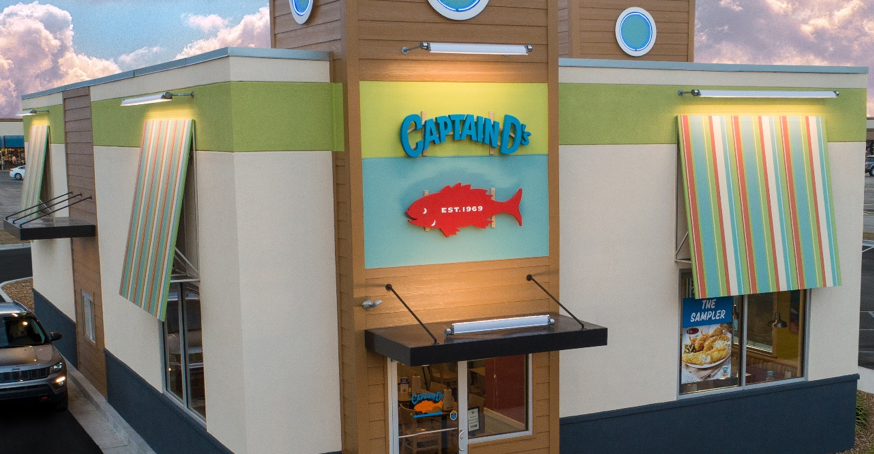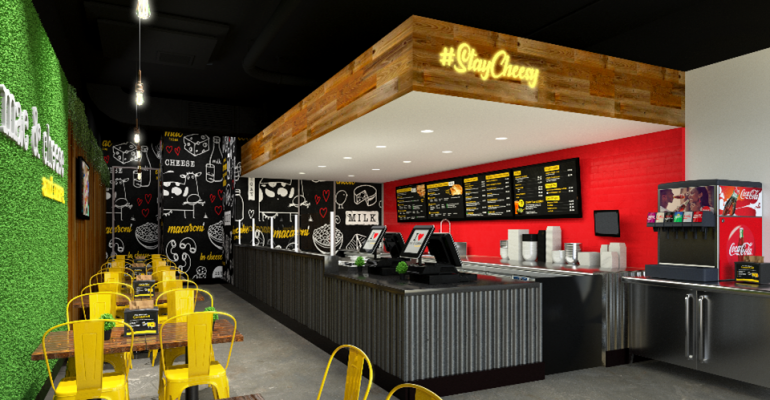Converting a second-generation restaurant space can potentially save franchisees substantial time and dollars over new construction, and now, due to the pandemic’s harsh toll on the industry, there are more shuttered buildings around the country than ever before.
A National Restaurant Association operators’ survey in May reported that about 90,000 eating and drinking places were completely closed.
A number of growing restaurant chains are now taking advantage of this moment to help franchisees secure good sites and get their doors open quickly and efficiently. But for all of its benefits, the conversion approach comes with its own challenges and requires as much due diligence as evaluating a site for new construction, experts say.
When a second-gen location becomes available, franchisors and franchisees have a lot to mull over, including the cost of the location, physical condition of the building, area demographics, residential density, traffic patterns, retail neighbors and the overall restaurant saturation of the market. A red flag raised on any of these could be a deal breaker.
“We treat conversions just like a ground-up,” said Brad Reed, chief development officer of Captain D’s, a Nashville-based seafood chain with more than 500 units. “We look at the same items, including the cost of the building and all the demographics.
“We don’t necessarily go looking for conversions,” Reed added. “A conversion really has to be a great opportunity.”
This year, three of the 10 to 12 restaurants Captain D’s expects to open will be second-gen locations. That is slightly higher on a percentage basis than the rate in pre-pandemic days.
For franchisee Sajib Singha, conversion worked like a charm in Gun Barrel City, Texas, where he converted a former Jack in the Box restaurant into his third Captain D’s restaurant. Situated on the shores of Cedar Creek Lake, the city is a popular recreational getaway for Dallas-Fort Worth residents.
“I said, this is a good location,” said Singha, a veteran franchise owner of several brands. “This city has all kinds of different QSRs, except seafood. And with this being a lake town, I felt we can fit in here. You can actually see the lake from the restaurant lobby.”
It was an opportunity too good to pass up.
“We wanted to be in that market,” Reed said. “This location is right in front of a Walmart, which is a prime location for a Captain D’s. It’s a smaller market and we could have found other real estate. But we felt this is a prime location that we could not have had if not for conversion.”

This year, three of the 10 to 12 restaurants Captain D’s expects to open will be second-gen locations. That is slightly higher on a percentage basis than the rate in pre-pandemic days.
The conversion was completed in about 80 days, compared with the usual buildout period of roughly 120 days. Shortening the opening timetable allowed the store to start earning revenues sooner, speeding up the return on investment.
The parking lot and drive-thru lane were both in fine shape, but the facility was dated inside and out. Painting, new flooring and decor updates were necessary to bring it up to the new brand’s standards.
“We did a lot of remodeling,” said Singha. “If you walk in there now, it looks like it was made to be a Captain D’s.”
Other times, however, an initially promising second-gen location falls short under further scrutiny and the return on investment just isn’t there.
“We’ve had opportunities presented to us that made us say, ‘Hey, this is a great spot. We’d love to be here,’” Reed said. “But then, the building doesn’t make a lot of sense. We decide we are better off just walking away because it would cost too much to fix everything.”
Avoiding high construction costs was a draw for I Heart Mac & Cheese franchisee Vu Tran, who recently converted a former Garbanzo restaurant in Highlands Ranch, Colo.
“With the second-generation, you’re saving at least $100,000,” he said. “The plumbing is done, the concrete is done, the ceiling is done.”
Tran’s restaurant sports the redesign that the Boca Raton, Fla.-based fast-casual chain is rolling out nationwide. The new interior features natural wood elements, a wall of greenery and bright yellow seating. The location sits in a shopping complex near a Target store and Chick-fil-A unit, both of which he expects will draw vehicular traffic.
Second-gen sites can provide streamlined access to kitchen equipment as well, like the walk-in refrigerator Tran said was left by the building’s previous occupant.
“That was a big plus that saved a lot of money,” Tran said.
He was able to sell the kitchen hood because it is unnecessary in I Heart’s streamlined kitchen system.
“In the best-case scenario, we always want to look for second-generations and convert them,” he said.
Regardless of the approach, competition for good sites is fierce in the Denver market, Tran added.
“You’re going against the Starbuckses, the Noodles & Companies, the Modern Markets, all those successful businesses,” he said.
“The corporate office has actually helped me out tremendously with construction to design to basically everything,” Tran said. “They educated me about a lot of stuff, such as site selection, picking a location with good traffic on the drive home and paying attention to the co-tenants of the location.”
In Alpharetta, Ga., franchisees swiftly transformed a shuttered Indian restaurant into the third Atlanta-area location of Curry Up Now, a San Francisco-based fast-casual chain specializing in innovative spins on traditional Indian food.
The building was made operational in about three weeks for a cost of about $100,000, in addition to the cost of acquiring the location, according to Ankush Gupta, who along with Hemant Suri and Vishal Chopra are the Curry Up Now franchisees.
To support the Curry Up Now menu, some additional equipment, notably a flattop grill, was installed. On the plus side, the second-gen location had important pieces in place, such as the hood, walk-in refrigerator, grease trap and HVAC system. “Basically, everything was here for us,” said Gupta. “All we had to do was bring the equipment up to our requirements and it was a go.”
“Our next development will also be in greater Atlanta and we are looking at conversions,” said Gupta. “It’s so much faster and so much easier on your pocket.”



![Smoothie King Ribbon Cutting Terminal A_01[95].jpg](https://www.nrn.com/sites/nrn.com/files/styles/article_related_thumb_standard/public/Smoothie%20King%20Ribbon%20Cutting%20Terminal%20A_0195.jpg?itok=WNYpNsAy)

